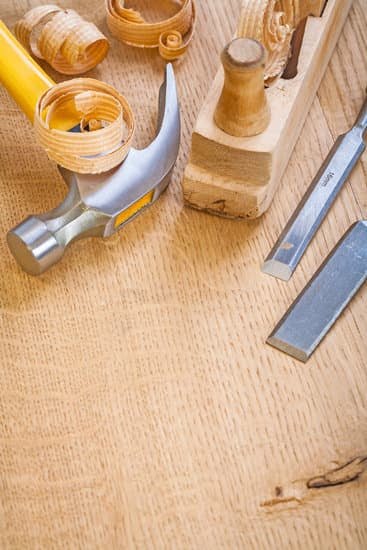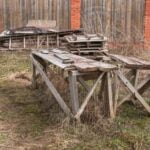Woodwork is a beautiful and timeless addition to any home, but over time, old varnished woodwork can accumulate dirt, grime, and wear that diminishes its original beauty. Cleaning and maintaining old varnished woodwork is essential not only for aesthetic purposes but also for preserving its longevity.
In this article, we will explore the step-by-step process of cleaning and restoring old varnished woodwork. We will address the challenges faced when dealing with such surfaces and provide effective solutions to help you bring back the luster of your beloved woodwork.
Cleaning old varnished woodwork presents unique challenges due to its delicate nature. While these surfaces may have stood the test of time, they often bear the marks of everyday life-scratches, stains, or even cracks-all of which require special attention in the cleaning process.
Moreover, choosing appropriate cleaning products and tools is crucial to avoid damaging the underlying wood or stripping off the existing varnish. Understanding these challenges and knowing the right techniques can ensure successful restoration and maintenance of your cherished wooden surfaces.
To begin cleaning old varnished woodwork, it is vital to assess its current condition properly. By understanding the level of dirt, grime, or damage present on the surface-including identifying cracks, scratches, or stains-you can tailor your approach accordingly.
Additionally, determining the type of varnish used on your woodwork will help you choose suitable cleaning methods and products. With a clear understanding of these factors and armed with effective techniques and solutions tailored for old varnished surfaces, you can embark on a journey to restore your woodwork’s natural beauty while ensuring its continued protection for years to come.
In the following sections of this article, we will delve deeper into each step involved in cleaning old varnished woodwork. From preparing the woodwork for cleaning to spotting stubborn stains and addressing them effectively-we’ve got you covered.
We will also guide you through the step-by-step cleaning process, sharing expert tips and techniques to ensure you achieve the best results. So, let’s roll up our sleeves, grab our gloves and cleaning tools, and embark on this satisfying journey of reviving and maintaining the beauty of old varnished woodwork.
Understanding the Condition of the Woodwork
Assessing the Level of Dirt, Grime, and Damage
Before initiating the cleaning process for old varnished woodwork, it is essential to evaluate the current condition of the surfaces. Start by examining the level of dirt and grime accumulated on the woodwork. This will vary depending on factors such as location, usage, and maintenance history. Use a soft cloth or sponge to wipe off some areas gently and observe how easily the dirt comes off.
Additionally, carefully inspect for any cracks, scratches, or stains that require special attention during the cleaning process. Cracks may indicate deeper issues with the structure of the woodwork that may need professional intervention. Stains or discoloration could indicate water damage or exposure to certain substances over time.
Determining the Type of Varnish Used
Understanding the type of varnish used on your woodwork is important in choosing appropriate cleaning methods and products. While oil-based varnishes are often more durable and resistant to moisture, they can be harder to remove if damaged or discolored. On the other hand, water-based varnishes are generally easier to clean but may not provide as strong of a protective barrier.
To determine the type of varnish used on your woodwork, examine any existing labels or documentation if available. If not, you can perform a simple test by applying a small amount of denatured alcohol or nail polish remover to an inconspicuous area of the woodwork using a cotton ball. If it reacts by dissolving or softening rapidly, it indicates a water-based varnish. However, if there is no noticeable reaction after several minutes, it is likely an oil-based varnish.
Special Attention for Specific Issues
During this assessment phase, pay close attention to any specific issues such as water rings from wet glasses or ink stains from accidental spills. These stains may require special cleaning methods or remedies beyond regular cleaning techniques. It is important to note these problem areas to address them appropriately during the cleaning process.
By taking the time to understand the condition of your old varnished woodwork, you can tailor your cleaning approach accordingly. This allows for a more effective and gentle restoration process that not only cleans the surfaces but also helps preserve their original beauty.
Preparing the Woodwork for Cleaning
Before beginning the cleaning process, it is important to properly prepare the woodwork to ensure effective and safe cleaning. Preparing the woodwork involves removing loose dust and debris, protecting nearby furniture and flooring, and taking proper safety measures.
Firstly, start by removing any loose dust, dirt, or debris from the woodwork. This can be done using a soft brush or a vacuum cleaner with a brush attachment. Be gentle when brushing or vacuuming to avoid scratching or damaging the surface of the varnished woodwork.
Next, it is crucial to protect nearby furniture, flooring, and valuable items from potential damage during the cleaning process. Covering them with plastic sheets or removing them from the area altogether will prevent any accidental spills or drips from causing harm.
Additionally, personal safety should always be a priority when working with cleaning products and materials. When preparing woodwork for cleaning, it is important to wear protective gloves to protect your hands from chemicals and irritation. Goggles should also be worn to protect your eyes from any splashes or sprays that may occur during the cleaning process. Lastly, ensure that there is proper ventilation in your workspace by opening windows or using fans to circulate fresh air.
By properly preparing the woodwork for cleaning, you set yourself up for success in achieving a thorough and safe cleaning process. Taking these steps not only protects the woodwork itself but also helps minimize any risks associated with handling cleaning solutions and ensures your own safety while working on this task.
Choosing the Right Cleaning Products and Tools
When it comes to cleaning old varnished woodwork, selecting the appropriate cleaning products and tools is crucial to ensure effective cleaning without causing damage to the surface. Using the wrong products or tools can strip off the varnish, scratch the wood, or leave behind residue. Therefore, it is important to consider the following factors before choosing your cleaning supplies.
1. Cleaning Solutions: There are various options for cleaning solutions that are suitable for old varnished woodwork. Mild dish soap mixed with water is a gentle and effective choice for general cleaning.
Another option is vinegar diluted with water, which can help remove dirt and grime. Additionally, there are specialized wood cleaners available on the market that are specifically formulated for cleaning varnished wood surfaces. These cleaners often contain mild solvents and oils that can help restore the wood’s natural luster.
2. Tools: Using the right tools is equally important as choosing the right cleaning solutions. Soft microfiber cloths are ideal for wiping down wood surfaces as they are gentle and do not leave lint behind.
Sponges with a non-abrasive side can also be used for tougher stains or build-up but should be used with caution to avoid damaging the surface. When it comes to brushes, opt for soft bristle brushes that won’t scratch or damage the varnish. It’s important to avoid using steel wool or abrasive materials as they can strip off the varnish and cause permanent damage.
| Cleaning Solutions | Tools |
|---|---|
| Mild dish soap mixed with water | Soft microfiber cloths |
| Vinegar diluted with water | Sponges with non-abrasive side |
| Specialized wood cleaners | Soft bristle brushes |
Remember, it’s always a good idea to test any cleaning solution or tool on an inconspicuous area before applying it to the entire woodwork. This will help ensure that the cleaning process does not cause any damage or discoloration. By choosing the right cleaning products and tools, you can effectively clean and restore your old varnished woodwork while preserving its beauty and integrity.
Testing and Spot Cleaning
When it comes to cleaning old varnished woodwork, it’s important to proceed with caution. Before applying any cleaning solution or method to the entire surface, it is crucial to conduct a patch test on an inconspicuous area of the woodwork. This will help ensure that the cleaning solution doesn’t damage or dull the varnish.
To perform a patch test, follow these simple steps:
- Choose a small, hidden area on the woodwork, such as underneath a table or chair.
- Prepare a small amount of the cleaning solution you intend to use.
- Apply the solution to a soft cloth or sponge and gently rub it onto the selected spot.
- Observe the reaction of the varnish for at least 10-15 minutes.
- Check for any signs of discoloration, warping, or damage to the varnish.
If there are no adverse effects observed during this testing period, it is generally safe to proceed with cleaning the rest of the woodwork using the chosen solution.
In addition to conducting a patch test, it’s also important to know how to spot clean specific stains or marks on your old varnished woodwork. Here are some common stain removal tips:
– Water rings: Mix equal parts water and vinegar in a small bowl and soak a soft cloth in the mixture. Gently rub the affected area in circular motions until the stain disappears.
– Ink stains: Squeeze lemon juice onto a soft cloth and apply it directly to the ink stain. Allow it to sit for a few minutes before gently rubbing away with another clean cloth.
By addressing stains using these targeted methods, you can effectively remove them without causing further damage or deterioration to your precious varnished woodwork.
Remember, always proceed with caution when attempting spot cleaning and consult professional advice if unsure about how certain stains should be treated.
Step-by-Step Cleaning Process
The step-by-step cleaning process is a crucial part of restoring old varnished woodwork. By following a systematic approach, you can effectively remove dirt, grime, and stains without causing any damage to the wood or the varnish. Here is a detailed breakdown of the cleaning process:
- Start from the Top: Begin by wetting a soft microfiber cloth or sponge with your chosen cleaning solution. It is important to avoid soaking the cloth or sponge as excessive moisture can lead to warping or discoloration of the wood. Gently wipe the wood surface in a horizontal motion, working from top to bottom.
- Pay Attention to Grain Direction: As you clean, make sure to follow the natural grain direction of the woodwork. This will prevent any potential damage or scratches caused by wiping against the grain.
- Use Gentle Pressure: Apply light pressure while wiping to avoid stripping off the varnish or damaging the delicate surface of the woodwork.
- Change Cleaning Cloth or Sponge Regularly: As you progress with cleaning, particles of dirt and grime may accumulate on your cloth or sponge. To ensure effective cleaning, change your cloth or rinse your sponge regularly to prevent re-contamination.
- Take Extra Care around Cracks and Edges: Cracks and edges are more vulnerable to water damage and may require special attention during cleaning. Use a soft brush or toothbrush dipped in your cleaning solution to reach into these hard-to-reach areas without causing excessive moisture buildup.
- Dry Immediately: After each section has been cleaned, dry it immediately with a soft, absorbent cloth to remove any excess moisture and minimize the risk of warping.
- Repeat if Necessary: Stubborn stains or build-up may require multiple rounds of cleaning for complete removal. If necessary, repeat the steps above until you achieve desired results.
By following this step-by-step process, you can effectively clean old varnished woodwork and restore its natural beauty. Remember to always test any cleaning solution or method on an inconspicuous area first to ensure it doesn’t cause any damage to the varnish. With patience, care, and attention to detail, you can breathe new life into your old varnished woodwork.
Addressing Stubborn Stains and Build-up
When it comes to old varnished woodwork, stubborn stains and build-up can be a common issue. However, with the right techniques and solutions, you can effectively remove these blemishes and restore the beauty of your woodwork. Here are some specialized tips to tackle stubborn stains and build-up:
- Grease Stains: Grease stains can be particularly challenging to remove from varnished woodwork. To tackle these stains, create a mixture of baking soda and water to form a paste. Gently rub the paste onto the affected area using a soft cloth or sponge in circular motions. Allow the paste to sit for a few minutes before wiping it clean with a damp cloth.
- Water Spots: Water spots are another common issue that can mar the appearance of your varnished woodwork. To remove these spots, create a paste using salt and white vinegar. Apply the paste onto the affected area and gently rub it in with a soft cloth or sponge. Afterward, wipe away the residue with a clean, damp cloth.
- Excessive Build-up: Over time, varnished woodwork can accumulate excessive build-up from dirt, grime, or previous cleaning products. To address this build-up, consider lightly sanding the affected area using fine-grit sandpaper in the direction of the grain. This will help to smooth out any rough patches and reveal the natural beauty of the wood underneath.
Additionally, if sanding alone doesn’t completely remove the build-up, you may need to apply a gentle wood stripper before cleaning. Follow the instructions provided on the wood stripper product carefully to avoid damaging your woodwork.
Remember, it’s important to always test any cleaning method or solution on an inconspicuous area first before applying it to larger portions of your woodwork. This will ensure that there won’t be any adverse effects or damage to the varnish.
By following these specialized tips for addressing stubborn stains and build-up, you can revitalize your old varnished woodwork and bring back its original luster. Remember to take your time, be gentle with the wood surface, and always prioritize the preservation of the varnish when cleaning.
Drying and Restoring the Varnished Woodwork
After completing the cleaning process, it is important to properly dry and restore the varnished woodwork to ensure its longevity and maintain its aesthetic appeal. Drying the woodwork correctly is crucial to prevent warping or drying out of the wood. Additionally, restoring the woodwork can enhance its natural beauty and provide protection against future damage.
To dry the varnished woodwork, it is essential to avoid excessive heat sources or direct sunlight. Excessive heat can cause warping, while direct sunlight can lead to drying out of the wood. Instead, allow the woodwork to air dry naturally in a well-ventilated area. If necessary, use a fan or dehumidifier to promote air circulation and speed up the drying process.
Once the varnished woodwork is completely dry, it is time to proceed with the restoration process. There are several options for restoring varnished woodwork, depending on personal preference and desired outcome. One common method is applying a thin layer of varnish or lacquer to protect the wood surface and bring out its natural beauty. Choose a high-quality product that matches your existing varnish for a seamless finish.
Alternatively, you may opt for wax as a restoration option for your varnished woodwork. Wax provides a protective barrier against moisture and further oxidation while enhancing the sheen of the wood surface. Apply a thin layer of wax using a clean cloth in small circular motions and buff it gently until you achieve the desired shine.
Another option for restoring varnished woodwork is using an oil-based finish. Oil finishes penetrate into the wood fibers, nourishing and protecting them from within while creating a soft and lustrous appearance. Apply oil finish evenly using a clean cloth or brush following manufacturer instructions.
Regardless of which restoration method you choose, always make sure to follow product instructions carefully for best results. Take your time during this step as proper restoration will greatly enhance the overall appearance and durability of your old varnished woodwork.
Conclusion
In conclusion, cleaning old varnished woodwork is an essential task for maintaining its longevity and preserving its aesthetic appeal. By following the step-by-step process outlined in this article, you can effectively clean and restore your woodwork to its former glory.
Regular maintenance is key to ensuring that your old varnished woodwork remains in good condition. By understanding the condition of the woodwork and taking steps to prepare it for cleaning, you can minimize any potential damage during the process.
Choosing the right cleaning products and tools is crucial to avoid causing harm to the varnish. It is important to test any cleaning solutions on a small area before applying them to the entire surface. By using appropriate techniques for spot cleaning and addressing stubborn stains or build-up, you can achieve satisfactory results.
Once the cleaning process is complete, it is essential to properly dry and restore the varnished woodwork. Applying a thin layer of varnish, wax, or oil-based finish not only enhances its natural beauty but also provides protection against future damage.
Taking the time and effort to clean and restore your old varnished woodwork will undoubtedly bring satisfaction and beauty back to your living space. Remember to refer back to this article or seek additional resources for further guidance on woodwork maintenance and restoration. With proper care, your old varnished woodwork can continue to impress for years to come.

Hi everyone! I’m a woodworker and blogger, and this is my woodworking blog. In my blog, I share tips and tricks for woodworkers of all skill levels, as well as project ideas that you can try yourself.





